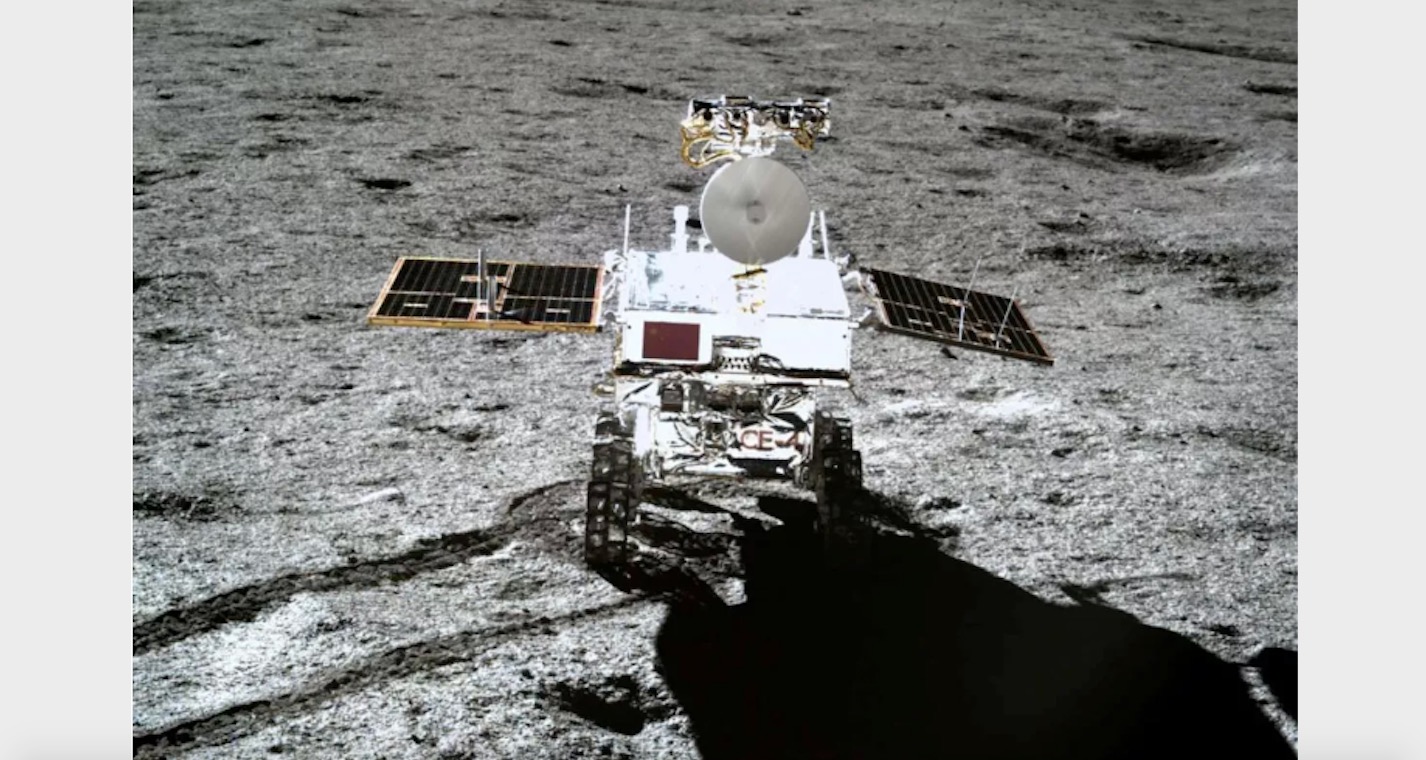China's Yutu 2 rover still rolling after nearly 4 years on moon's far side
The rover landed on China's Chang'e 4 mission in January 2019.

The first robots ever to land safely on the far side of the moon are quietly continuing their work, according to a rare update on the mission.
China's Chang'e 4 lander and Yutu 2 rover set down in Von Kármán Crater back in January 2019 and have been carrying out science and exploration objectives ever since.
There had been a lack of reports on the progress of the pair in recent months, but a mission update coinciding with the Chinese calendar's Mid-Autumn Festival, or Moon Festival, reveals that all is well with the solar-powered craft.
Related: The latest news about China's space program
The six-wheeled, roughly 309-pound (140 kilograms) Yutu 2 has accumulated nearly 4,265 feet (1,300 meters) of driving in its roughly 3.5 years on the far side of the moon, according to the update from CCTV. Its journey has also been spotted from orbit by NASA's Lunar Reconnaissance Orbiter.
The rover carries a panoramic camera, with which it infamously spotted what was initially described as a "mystery hut" but turned out to be a rabbit-shaped rock. Yutu 2 is also equipped with a lunar penetrating radar, an infrared imaging spectrometer and a neutral atom detector co-developed with Sweden, and has made a number of interesting findings on the far side of the moon.
The lander also carries science instruments and has contributed to our understanding of the far side of the moon.
Get the Space.com Newsletter
Breaking space news, the latest updates on rocket launches, skywatching events and more!
Because the lunar far side never faces Earth, China sent a relay satellite, named Queqiao, out into a special orbit beyond the moon, allowing it to bounce signals between the Chang'e 4 spacecraft and the Earth.
China's next lunar mission is expected to be Chang'e 6. The spacecraft will attempt to collect samples from the far side of the moon and will also need Queqiao or another satellite to communicate with Earth.
Follow us on Twitter @Spacedotcom or on Facebook.
Join our Space Forums to keep talking space on the latest missions, night sky and more! And if you have a news tip, correction or comment, let us know at: community@space.com.

Andrew is a freelance space journalist with a focus on reporting on China's rapidly growing space sector. He began writing for Space.com in 2019 and writes for SpaceNews, IEEE Spectrum, National Geographic, Sky & Telescope, New Scientist and others. Andrew first caught the space bug when, as a youngster, he saw Voyager images of other worlds in our solar system for the first time. Away from space, Andrew enjoys trail running in the forests of Finland. You can follow him on Twitter @AJ_FI.









